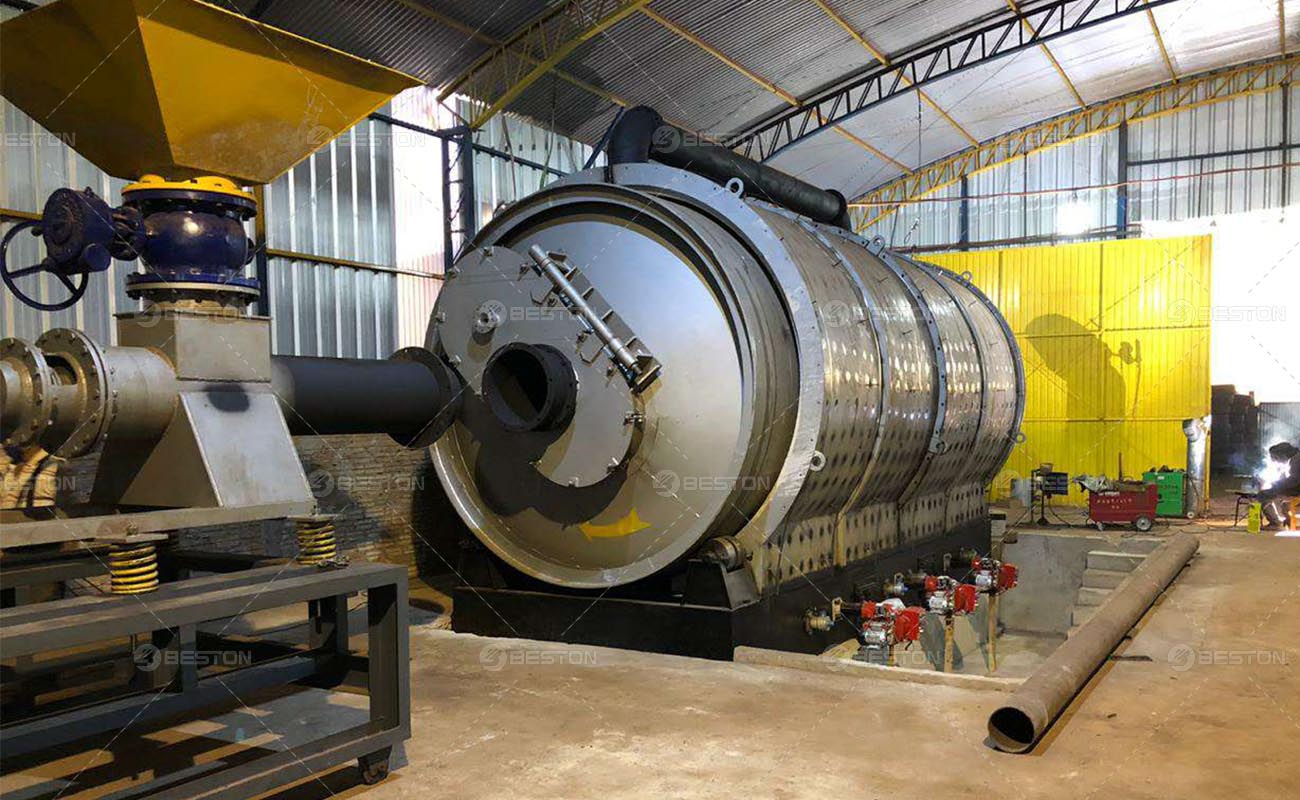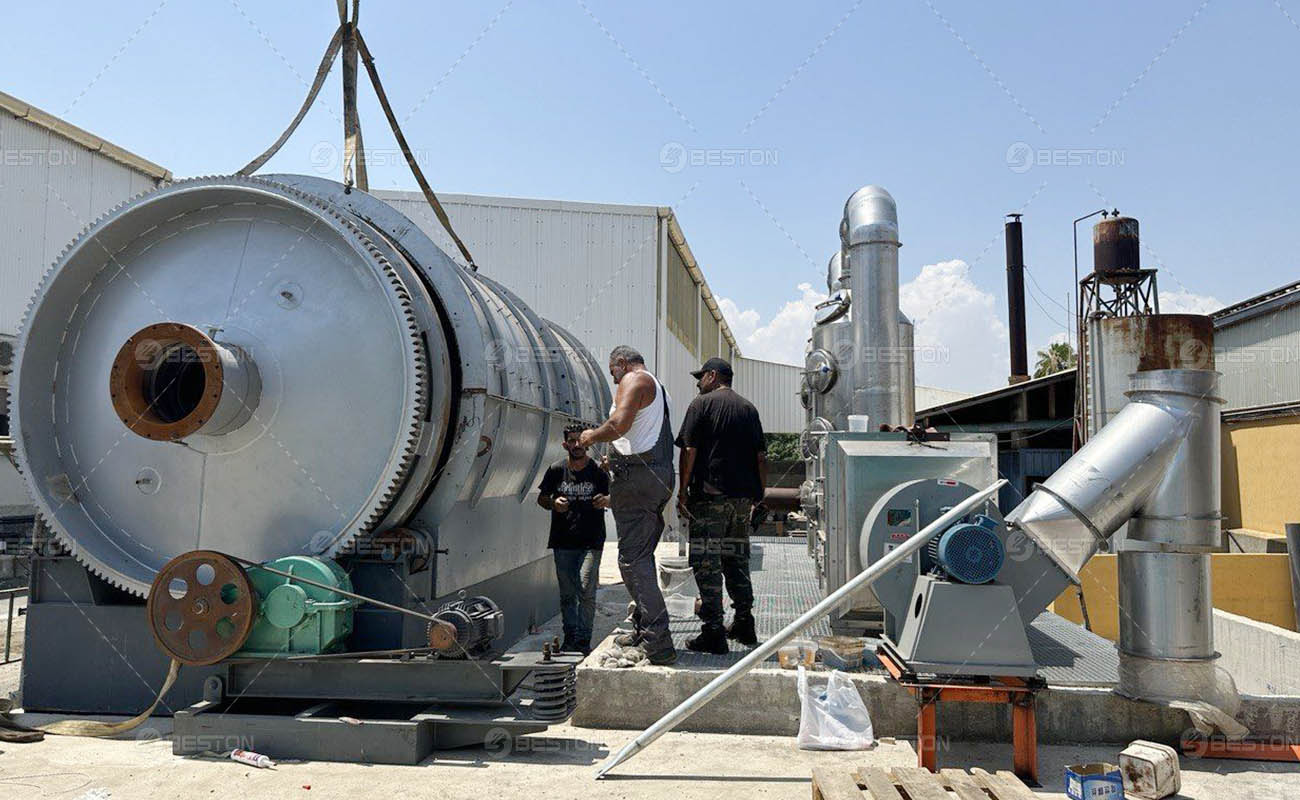In today’s world, where sustainability and responsible waste management are paramount, the utilization of pyrolysis technology has emerged as a significant game-changer. This article delves into the intricate process of processing tyre, plastic, and oil sludge through a pyrolysis plant, showcasing the innovative and eco-friendly approach to handling these waste materials.
Introduction
Brief Overview of Pyrolysis
Pyrolysis, derived from the Greek words “pyr” (fire) and “lysis” (separation), is a thermal decomposition process in the absence of oxygen. It holds immense potential for converting various organic materials into valuable products while mitigating environmental impacts.
Importance of Processing Tyre, Plastic, and Oil Sludge
Tyre, plastic, and oil sludge waste pose significant challenges due to their non-biodegradable nature. Pyrolysis offers a sustainable solution by transforming these materials into useful resources.
Purpose and Structure of the Article
This article aims to provide a comprehensive guide on setting up and operating a pyrolysis plant to process tyre, plastic, and oil sludge. It covers everything from the fundamentals of pyrolysis to equipment requirements, feedstock preparation, product utilization, and associated challenges.
Understanding Pyrolysis
Defining Pyrolysis and its Principles
At its core, pyrolysis involves subjecting organic materials to high temperatures (typically between 300°C and 800°C) in the absence of oxygen. This process leads to the breakdown of complex molecules into simpler compounds, resulting in the production of valuable products.
Types of Pyrolysis Processes
- Slow Pyrolysis: Characterized by longer reaction times and lower temperatures, slow pyrolysis yields a higher char fraction.
- Fast Pyrolysis: Rapid heating and shorter residence times define fast pyrolysis, favoring the production of pyrolysis oil.
- Flash Pyrolysis: Extremely rapid heating in milliseconds distinguishes flash pyrolysis, primarily producing gaseous products.
Advantages of Pyrolysis in Waste Management
Pyrolysis plant offers several advantages, including minimal emissions, resource recovery, and reduction in landfill waste, making it an environmentally sound waste management option.
Setting Up a Pyrolysis Plant
Location and Environmental Considerations
Selecting an appropriate site for your waste tyre pyrolysis plant is critical. Consider proximity to waste sources, transportation logistics, and compliance with environmental regulations.
Necessary Equipment and Machinery
- Reactor: The heart of the pyrolysis plant, where the feedstock undergoes thermal decomposition.
- Heat Source: Provides the energy needed for the pyrolysis reactions.
- Condensation System: Converts the vaporized products into liquid and gaseous fractions.
Regulatory Compliance and Permits
Ensure that you obtain all the necessary permits and comply with environmental and safety regulations to operate your pyrolysis plant legally and responsibly.
The Pyrolysis Process in Detail
Feedstock Preparation
- Sorting and Shredding: Begin by sorting the waste materials, removing contaminants, and shredding them into smaller, uniform pieces to facilitate the pyrolysis process.
- Size Reduction: Further reduce the feedstock’s size to optimize heat transfer and reaction rates during pyrolysis.
Loading and Heating
Load the prepared feedstock into the reactor and initiate the heating process. The absence of oxygen is crucial to prevent combustion and ensure efficient pyrolysis.
Pyrolysis Reactions
- Depolymerization: During pyrolysis, the long-chain polymers in the feedstock break down into smaller hydrocarbons and other compounds.
- Vaporization: The elevated temperature causes the feedstock to vaporize, producing a mixture of gases, vapors, and aerosols.
- Condensation: The vaporized products pass through a condensation system, where they cool and condense into liquid and gaseous fractions.
Product Collection
- Liquid Fraction (Pyrolysis Oil): This versatile product produced by plastic pyrolysis machine can be used as a fuel or as a feedstock in various chemical processes.
- Gaseous Fraction (Syngas): Syngas, a mixture of hydrogen and carbon monoxide, has numerous industrial applications and can be used for energy generation.
- Solid Fraction (Char): The remaining solid residue, known as char, can be utilized as a soil amendment or in the production of carbon black.
Residue Handling
Dispose of any unreacted or non-utilized materials responsibly and in compliance with environmental regulations. Minimize waste generation and consider opportunities for char utilization.
Applications and Benefits
Pyrolysis Oil Utilization
- Fuel Production: Pyrolysis oil can be refined into high-quality biofuels, reducing the reliance on fossil fuels.
- Chemical Feedstock: It serves as a valuable feedstock for the production of chemicals and industrial materials.
Syngas Applications
- Energy Generation: Syngas can be used in gas turbines or engines to generate electricity and heat.
- Industrial Processes: It is a key ingredient in processes like methanol synthesis and hydrogen production.
Char Utilization
- Soil Amendment: Char improves soil quality by enhancing nutrient retention and microbial activity, making it a valuable soil conditioner.
- Carbon Black Production: Char can also be processed into carbon black, and used in manufacturing tires, inks, and plastics.
Environmental Advantages
- Reduced Landfill Waste: Pyrolysis significantly reduces the volume of waste materials that would otherwise end up in landfills.
- Lower Carbon Footprint: By recycling and repurposing waste, pyrolysis contributes to a greener and more sustainable future.
Challenges and Considerations
Feedstock Variability
The composition and quality of the feedstock can vary, affecting pyrolysis efficiency and product yields. Strategies to handle feedstock variability are essential.
Energy Efficiency
Maintaining energy efficiency in the oil sludge treatment plant is crucial for economic viability and reducing environmental impacts.
Emissions and Air Quality
Mitigating emissions from the pyrolysis process, such as volatile organic compounds (VOCs) and particulate matter, is essential for environmental compliance.
Economic Viability
Consider the initial investment costs, operational expenses, and potential revenue streams when assessing the economic feasibility of a pyrolysis plant.
Conclusion
Recap of Key Points
In summary, pyrolysis is a promising technology for transforming tyre, plastic, and oil sludge waste into valuable resources. It offers a sustainable solution to waste management challenges, reducing environmental impacts and promoting a circular economy.
Encouraging Sustainable Waste Management
As we move towards a more sustainable future, embracing pyrolysis technology can play a pivotal role in reducing waste, conserving resources, and mitigating the environmental consequences of traditional waste disposal methods. Beston Group is an environmental protection equipment manufacturer that provides solutions. If you have investment needs, it will be a good choice.
Future Prospects of Pyrolysis Technology
Continued research and innovation in pyrolysis hold the potential to further optimize the process, enhance product quality, and expand its applications, paving the way for a cleaner and greener world.